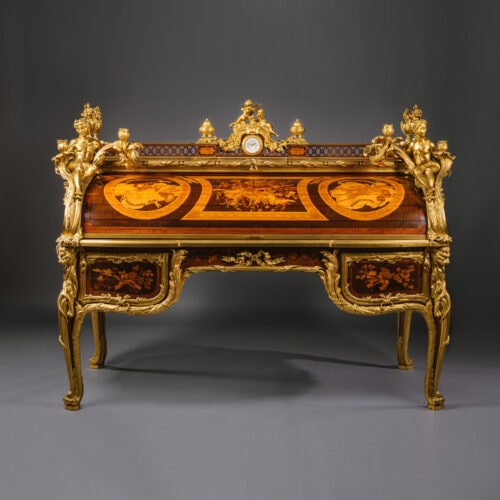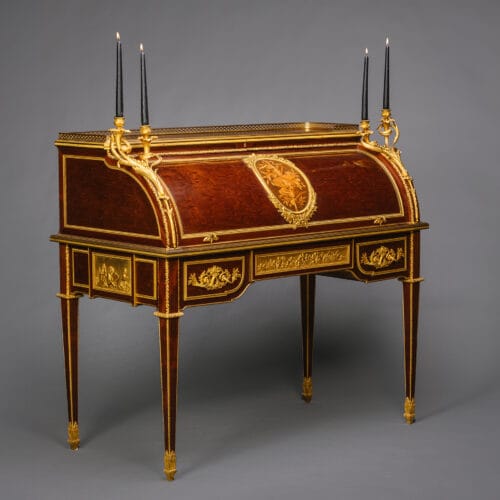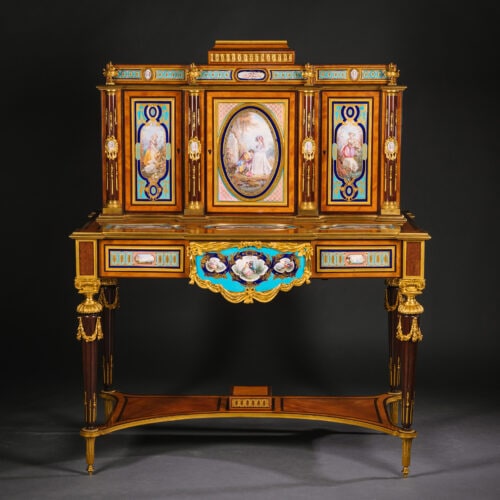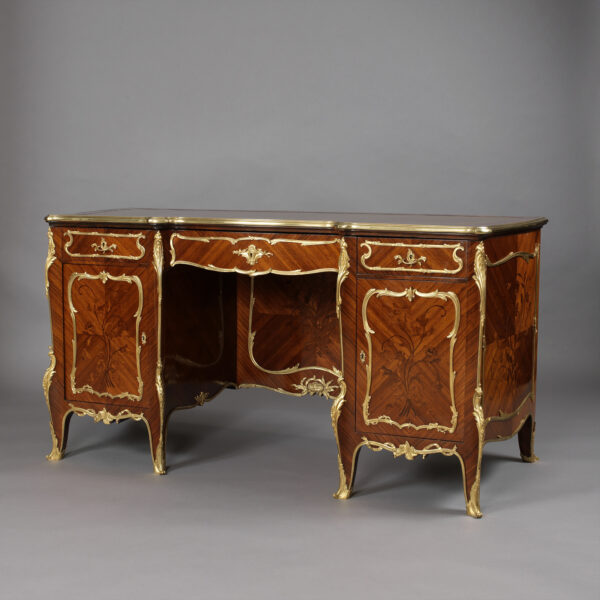Escritorio de pedestal estilo Imperio Napoleón III
£25,000
A Fine Napoleon III Gilt-Bronze Mounted Empire Style Mahogany Pedestal Desk. This imposing Empire style pedestal desk is mounted with fine gilt-bronze...
Dimensiones
Height: 79 cm (32 in)Width: 150 cm (60 in)
Depth: 85 cm (34 in)
Descripción
A Fine Napoleon III Gilt-Bronze Mounted Empire Style Mahogany Pedestal Desk.
This imposing Empire style pedestal desk is mounted with fine gilt-bronze Egyptian revival neo-classical mounts, on finely figured mahogany veneers. The desk has a rectangular inset gilt-tooled leather top above three frieze drawers, flanked by gilt-bronze anthemion mounts and three corresponding dummy drawers to the front; the sides with pull out leather inset slides. The two pedestal sections, each containing three drawers, flanked by tapering pilasters, headed by finely cast gilt-bronze female heads in the Egyptian manner and raised on plinth bases.
The Empire StyleIn 1804 Napoléon I, crowned himself Emperor of France, ending years of political instability and signalling the dawning of the Empire period. During this time, the economy was booming and a new aristocracy was forming, with Napoléon’s court as its cornerstone.
En este periodo se produce un renacimiento de las ideas e influencias clásicas, principalmente en las artes decorativas. La corte de Napoleón se apresuró a adoptar los diseños clásicos descubiertos en las excavaciones arqueológicas de Pompeya y Herculano, junto con los exóticos motivos jeroglíficos de las campañas egipcias. Las conquistas revolucionarias se reflejaron en el uso de formas antiguas en la arquitectura y las artes decorativas, proclamando la "fama" y la "victoria". El uso de estos diseños y motivos antiguos celebraba a Francia como heredera de estas grandes civilizaciones impregnándola de la grandeza de Grecia, la gloria de Roma y la magnificencia de los faraones.
Los motivos típicos del Imperio eran la hoja de acanto, el anthemion (madreselva estilizada), las patas de animales, la cornucopia, las figuras clásicas, el delfín, el águila, la lira y la roseta. Para la ornamentación, el bronce dorado era un requisito indispensable.
The most influential architects of the Empire style were Charles Percier (1764-1838) and Pierre-François-Léonard Fontaine (1762-1853). Official architects to Napoléon, their main responsibility was the renovation of the various royal residences, including Malmaison. Their ‘Recueil des décorations intérieures’ (1812) became the essential handbook of the Empire style. After the fall of Napoléon the Empire style continued to be in favour for many decades, with only minor adaptations.
The second half of the nineteenth century was to see a revival of the style, and the popularity of its strong but simple lines continues to the present day.
Fecha
Alrededor de 1870
Origen
Francia
Medio
Mahogany and Gilt-Bronze
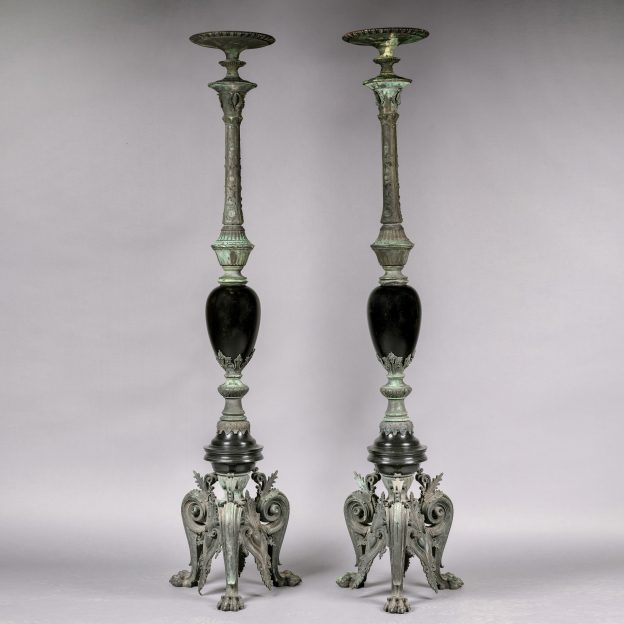




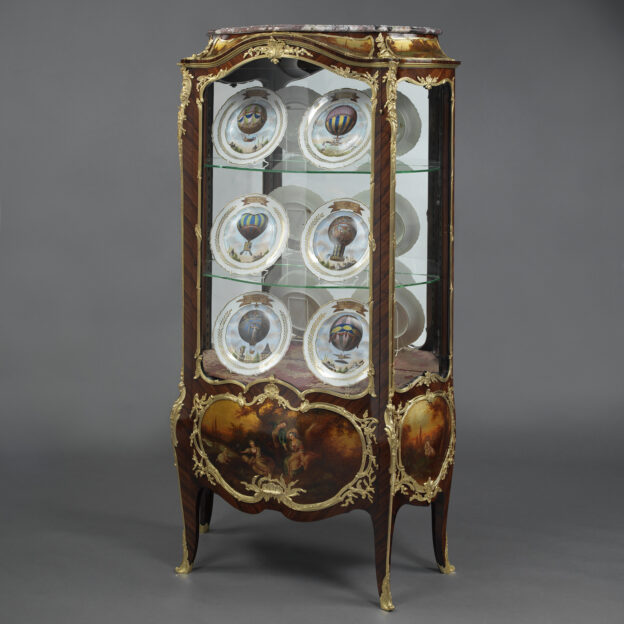

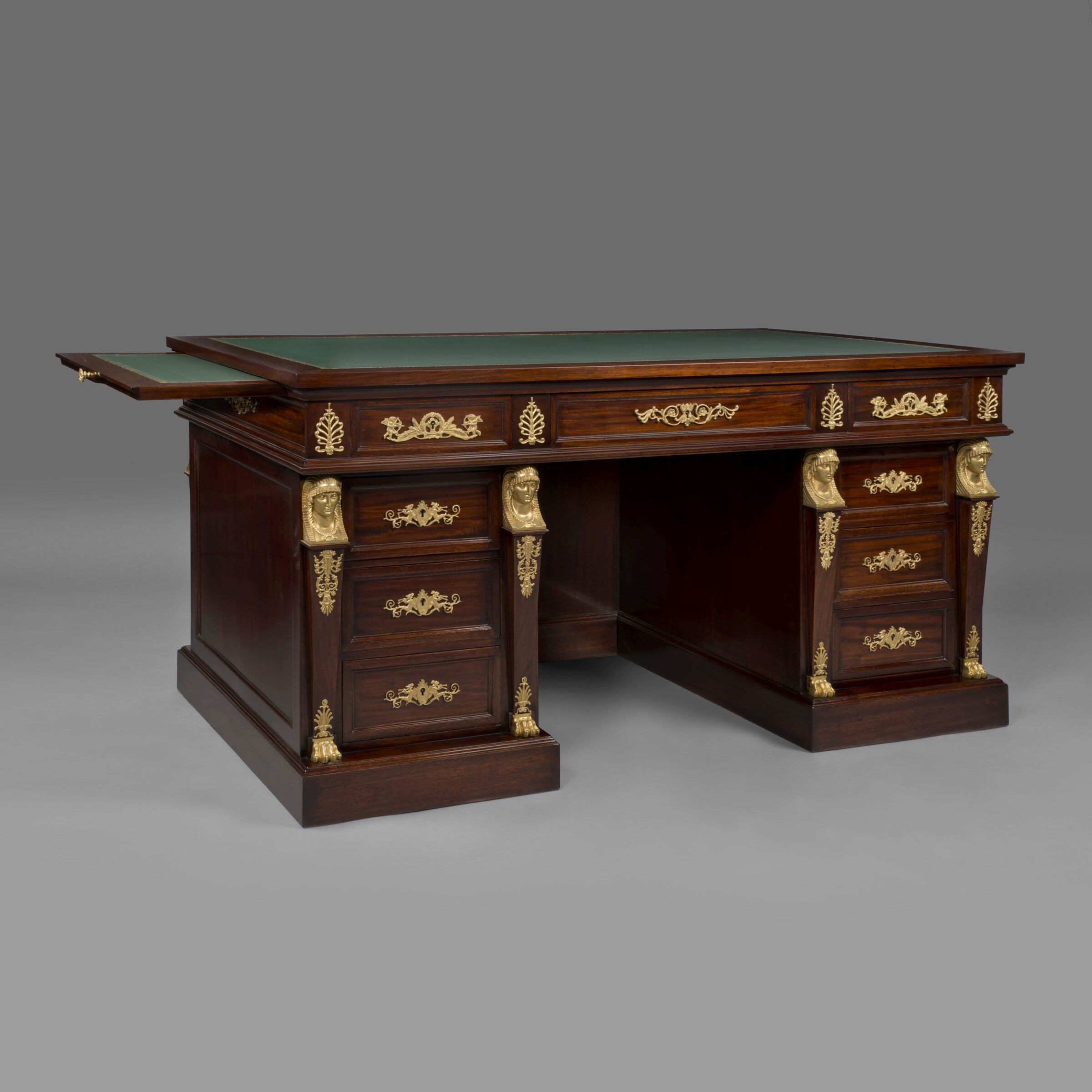
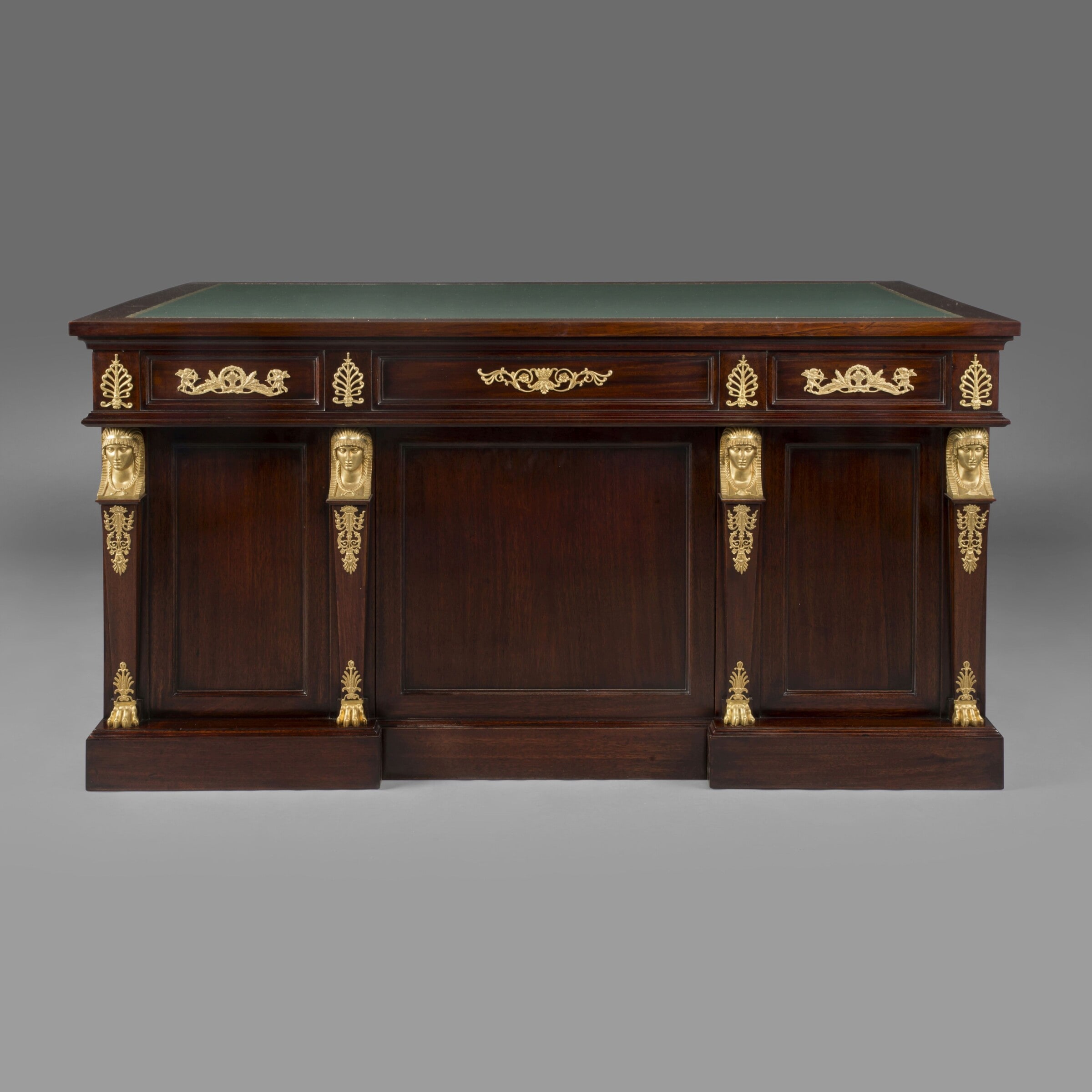
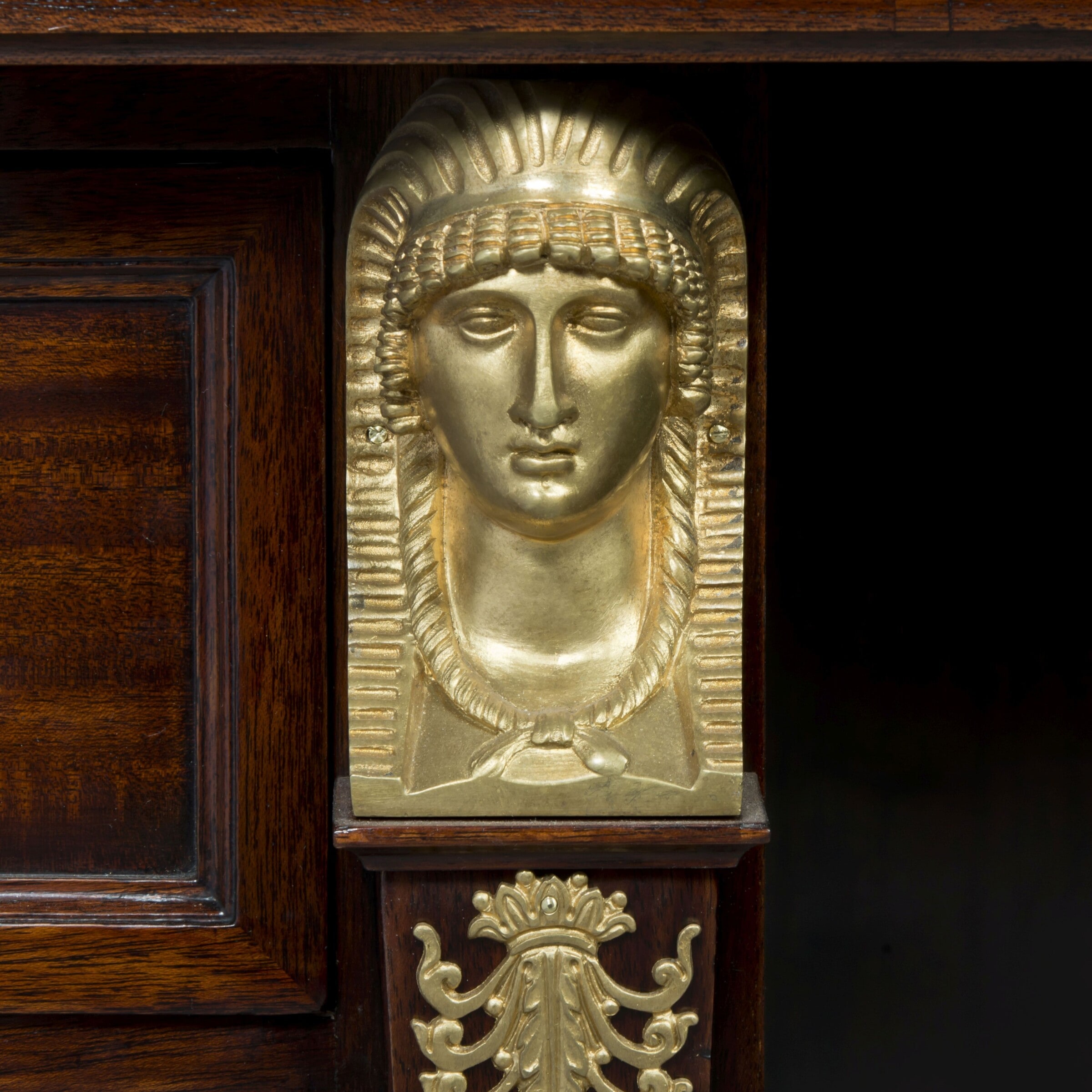
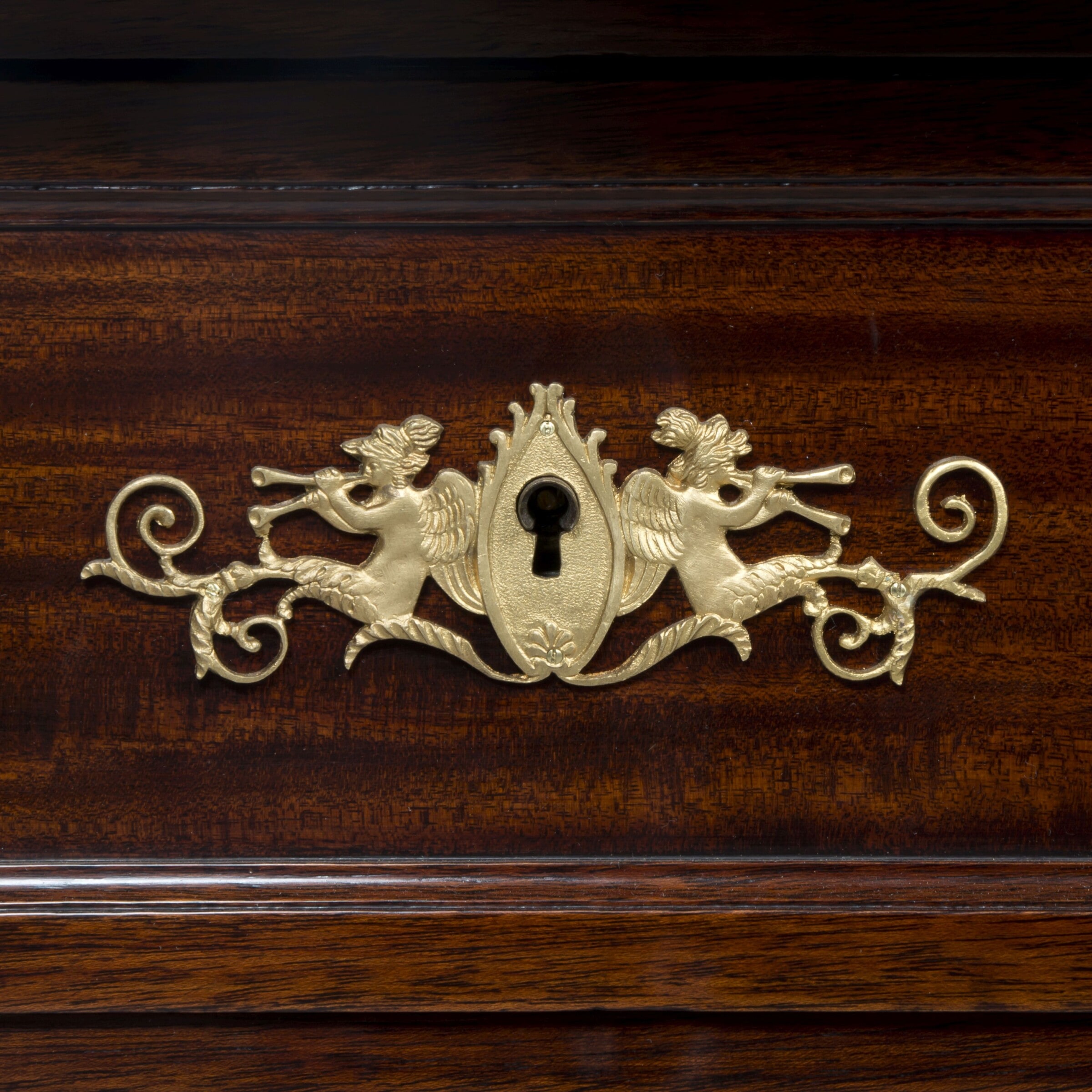
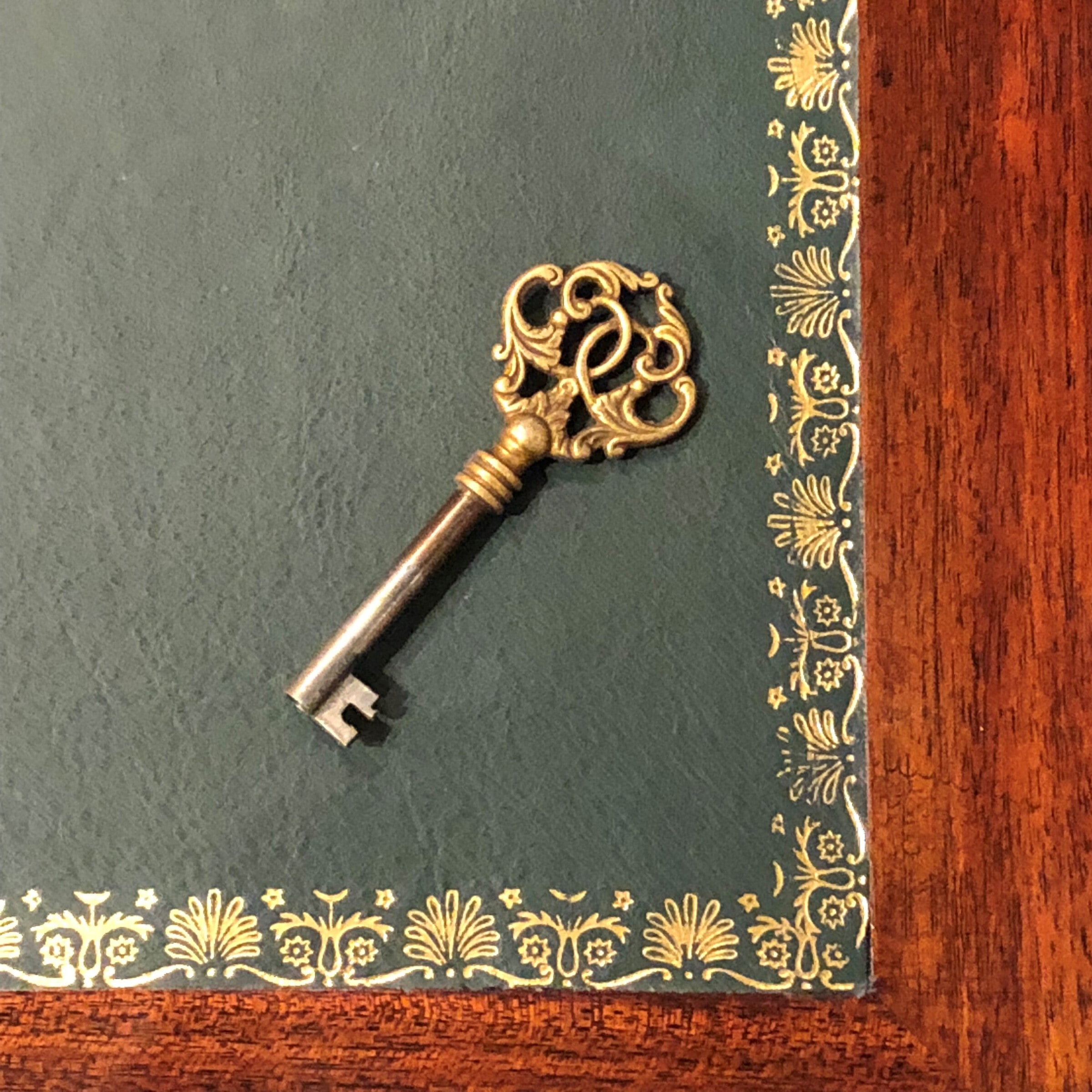
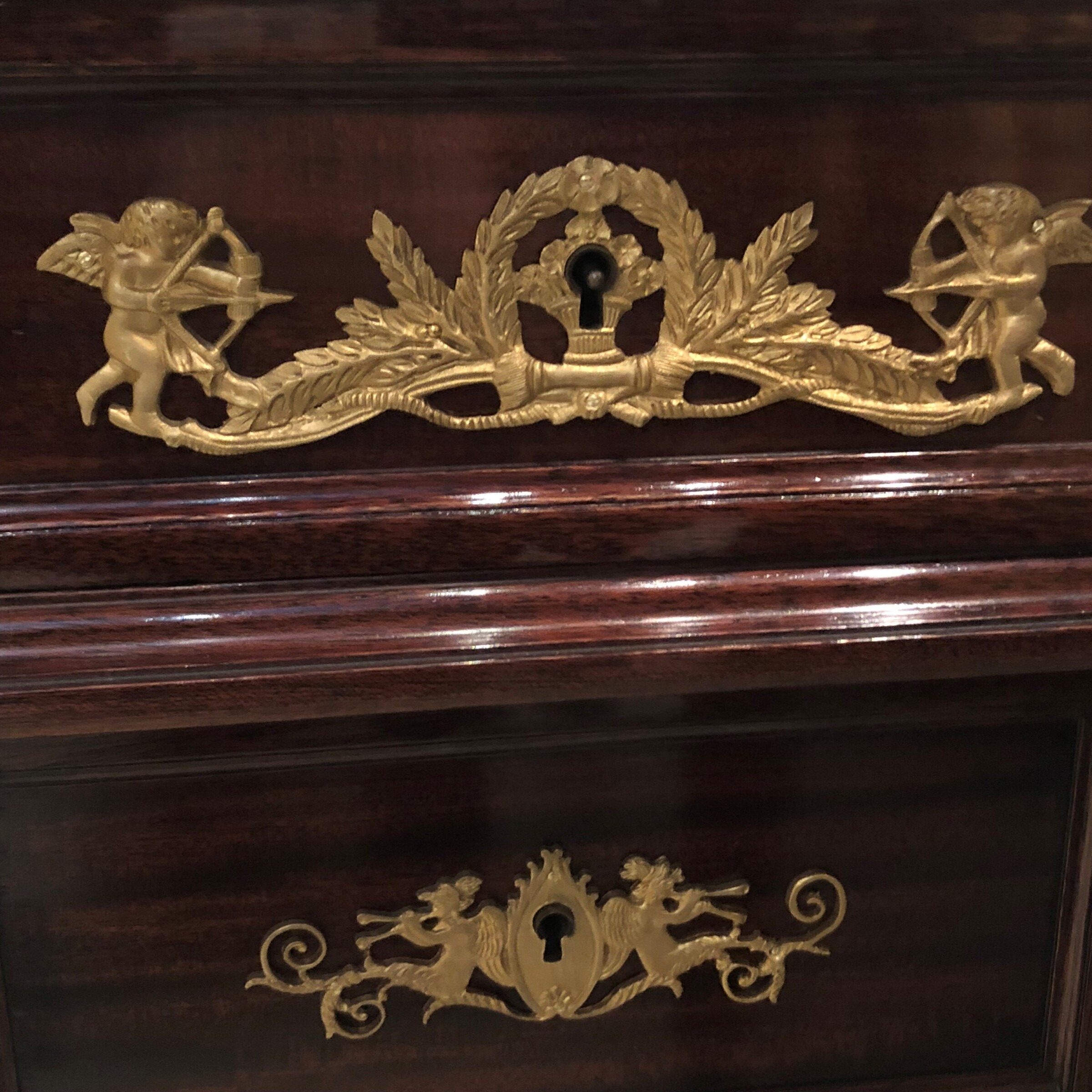
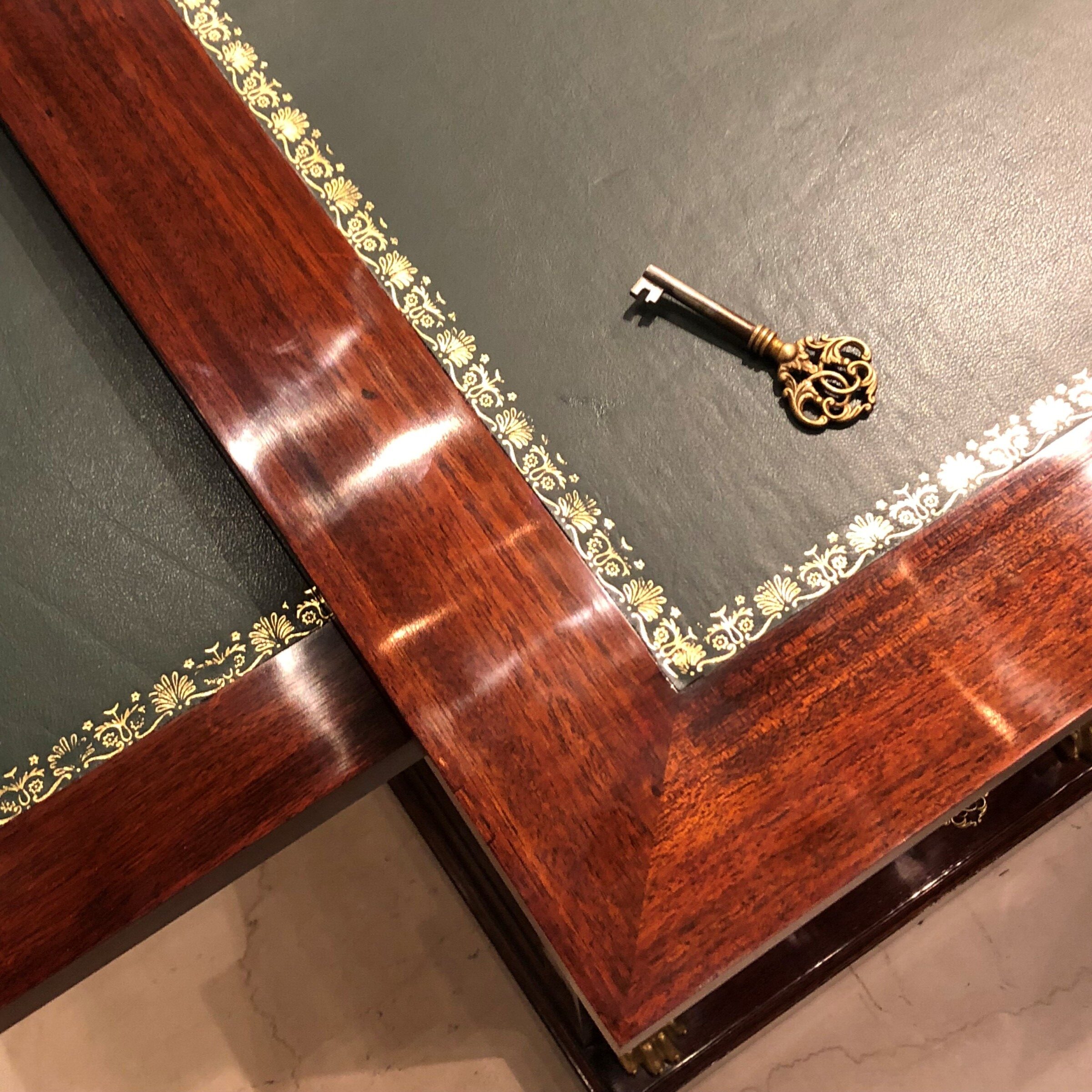
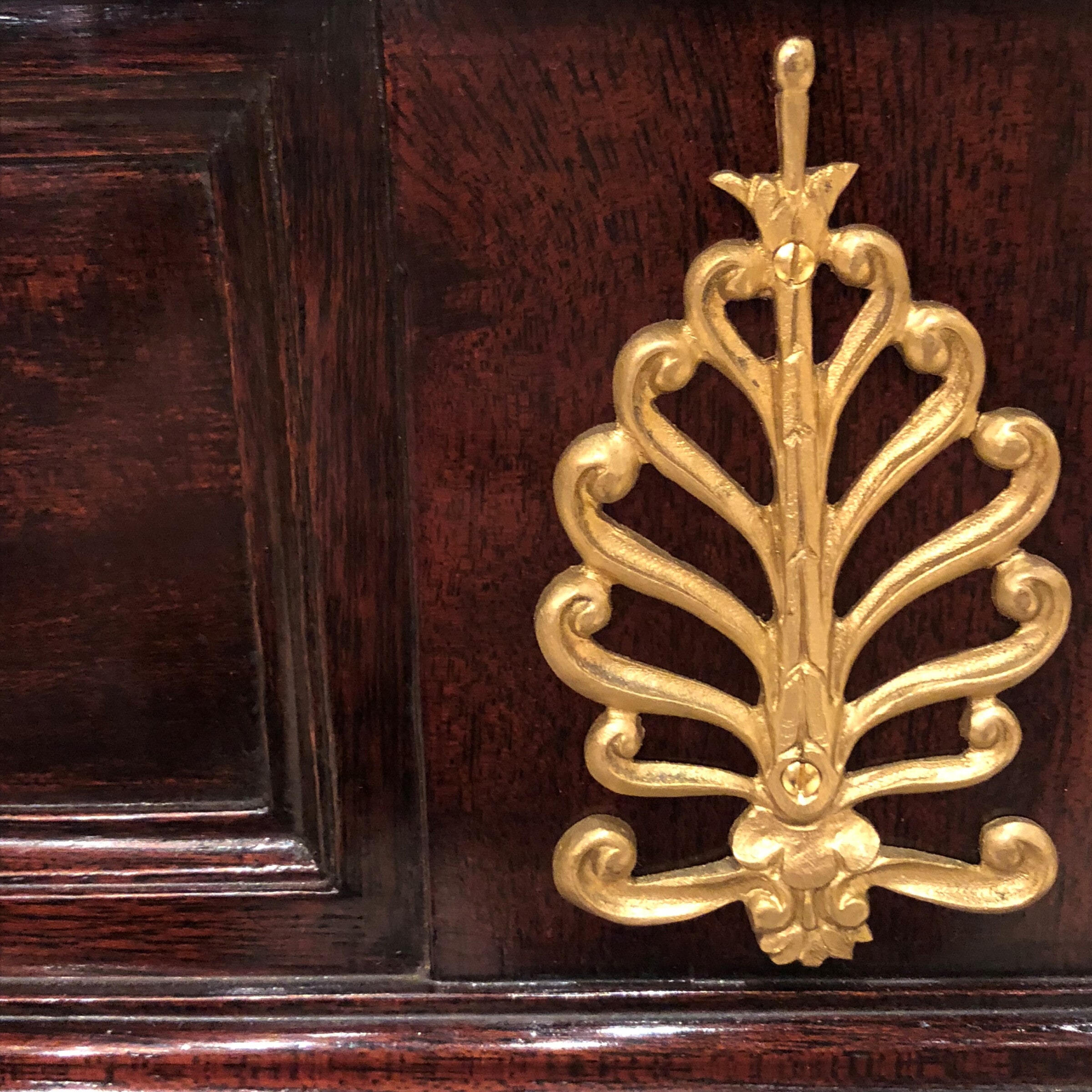
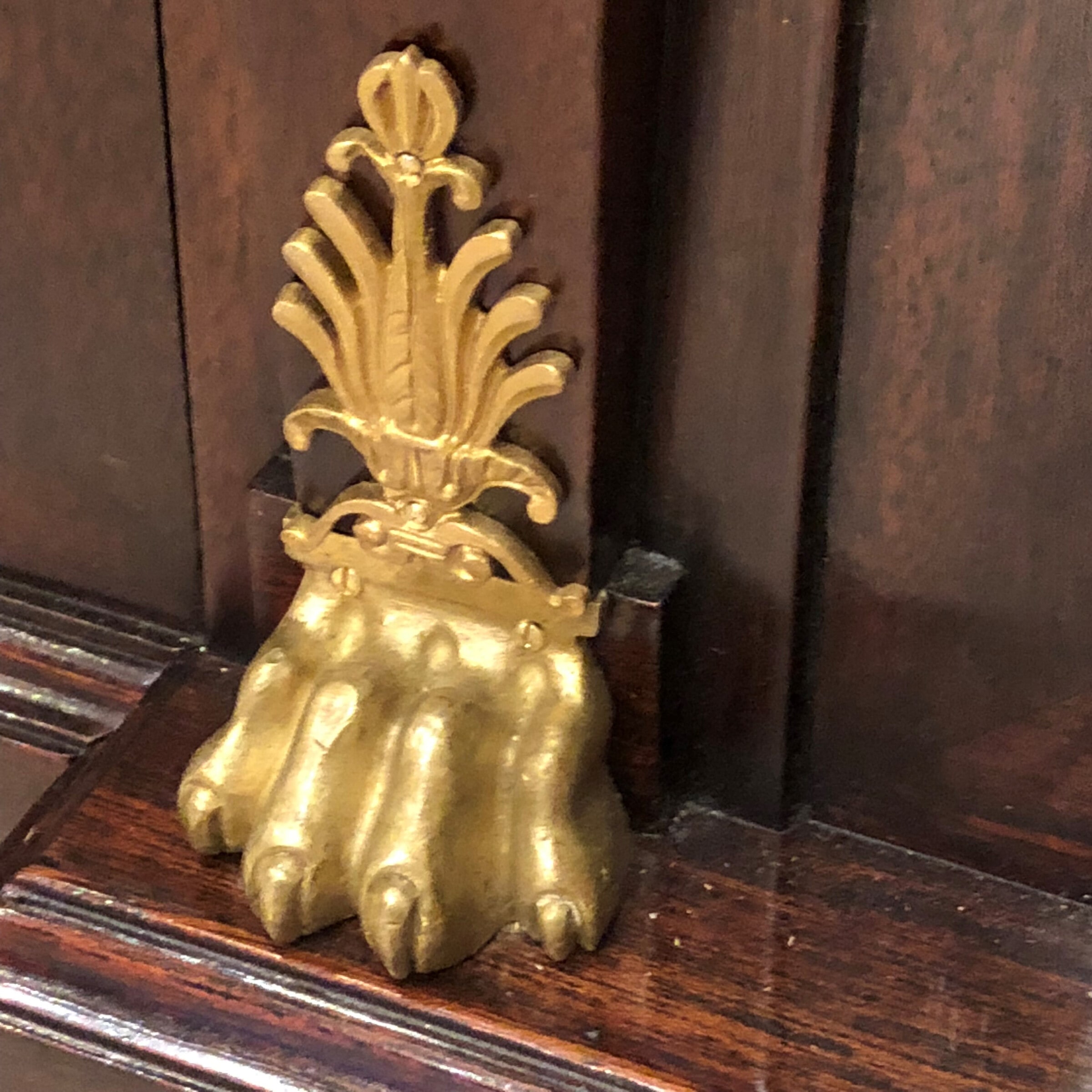

 Imprimir
Imprimir